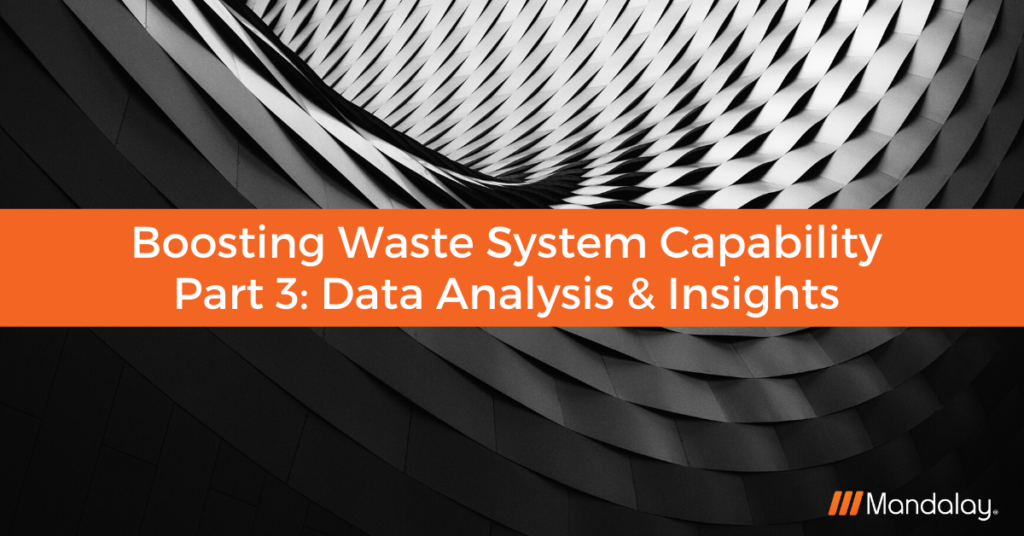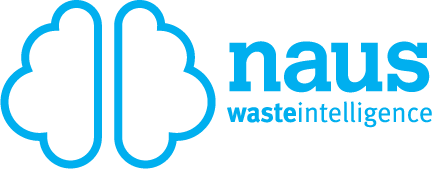
Transform your waste data into powerful information.
As we delve deeper into the ‘Boosting Waste System Capability’ story through this 3 part series, we have already explored why the waste industry needs to change in Australia as a whole and we’ve taken a look at some of the steps individual facilities can take when it comes to infrastructure and data to contribute towards this change. Now, we will be taking a closer look to see how that infrastructure and data capture can result in valuable insights that will clearly inform decisions and changes made at a facility, community and even a nation-wide level.
Mandalay is committed to a world without waste – where materials generated by the community transition from a cost centre to a revenue generator.
That’s why our software, products and services are all built around giving your facility and council the tools and ability to make more informed decisions that can push our country closer towards a circular economy.
Trusting Your Data & Reports
One of the biggest challenges faced by many organisations is a lack of trust in the data and the subsequent unease associated with the accuracy of reported figures. If you can’t trust the data you receive, how can you make accurate decisions based on that data?
The need for appropriate and accurate reporting is a pressing one for councils because, without accurate data, it’s impossible to plan for the future. At a national level, accurate data is one of the most critical hurdles to overcome in changing the waste landscape in Australia.
Here at Mandalay, we have launched a series of new data and analytics capabilities to address some of the concerns around inadequate reporting. Our reports and dashboards are also designed with data security and accuracy built in.
Correctly Reporting on and Analysing Your Data
To get proper use out of your data, the data needs to be visible and easy to interpret both on dashboards and in reports. Whether the data is displayed in tables, line graphs, pie charts or any other form, the way your data is displayed should be the best possible fit to deliver the information you need quickly and easily from that data.
You should also have some flexibility to create and include any relevant data points you like within your reports. If your reports are too rigid, you risk missing out on layers of analysis and insights you simply don’t have the ability to see and access.
Facility Data
Mandalay’s Facility Analytics and Reporting product is forever evolving and continues to expand, and gain features based on feedback from our waste customers. The data, reporting and analysis available in this product has been specifically created to inform and enhance your facility operations. It was important for us to develop this product to suit the specific needs of waste facilities, so every change or update made is always made with the customer in mind.
Waste Source & Council Data
Go even further with your data collection and analysis with Mandalay’s Residents Product Suite. Waste source and council data is an integral part of this suite which includes functionality to log and gather profile information on the individuals and property types in your community. This information can then be used to educate and inform your population about waste changes or initiatives that are specifically relevant to them.
The depth and knowledge of insights that can be gained from having access to both facility data and resident data opens up a whole new world of powerful decision making at both a facility and council level.
Regulatory Reporting
Reporting data to meet state and national regulatory requirements can be complicated and a lot of manual work is involved. Imagine working with a system that actually helped you with this task? Mandalay believes in providing practical solutions that help take the pain away from clients. That’s why our Facility Product Suite has been made to comply with various state and national regulatory bodies and regulatory requirements. The system will also change as requirements change.
Data Insights and Outcomes
Let’s step back into the big picture and consider the ‘circular economy’ goal. How will better data collection and analysis impact this? It all comes down to the more informed decisions that can be made based on this data and the impact those changes will have on reaching that goal.
In the waste industry, insights and outcomes that can be gained from data extend beyond economics and reaches into impacting real positive environmental outcomes.
Insights
Here are a few examples of the type of insights you can gain when you analyse and report on your captured data:
- Customer behaviour – how frequently customers visit your facility
- Financial – The amount of revenue generated by commercial customers
- Facility Use – The types of people using your facility (residents vs commercial) and the activities they undertake while at your facility
- Waste Type & Source – The type of waste and where it came from
- Waste Volume – Increases or decreases in the quantity of waste and why this has occurred
- Regulatory – The right data to meet regulatory requirements
- Volume of traffic – Recording vehicle movements to see the busiest days and times
- Auditing – Seeing and rectifying common mistakes by operators
- Fraud – Data to identify and correct any waste voucher misuse that may take place.
Outcomes
Here are just a few examples of the outcomes that can be gained following changes and decisions that can be made based on quality data:
- More efficient and streamlined facility processes derived from data can drive improvement and lead to more sustainable waste management.
- Improving collection and processing systems, particularly for organic waste to help cut greenhouse gas emissions from landfills.
- Using accurate data to establish national and common approaches to help improve the efficiency of Australia’s waste and resource recovery processes.
- Help grow markets for goods and infrastructure that avoid waste or contain recycled materials.
- Make informed decisions on changes to product design, production, use and reuse, recycling and disposal based on quality data.
- Inform the community on waste initiatives that are relevant to them and are more likely to have an impact based on resident data to increase awareness and improve waste behaviours of the general public.
- Overall, data is an essential part of a successful circular economy transition.
It’s easy to see the massive, broad-reaching impact that boosting your waste system capability can have on the entire waste landscape as a whole. Once you have all the pieces in place including effective data capture, facility infrastructure, efficient processes and the right analytics and reporting, you have what you need to make a significant impact not only on your facility but on the waste industry as a whole.
Haven’t had a chance to read the rest of this series? Read part 1 for a big picture view on waste facility capability followed by part 2 where we talk about facility infrastructure and data.


